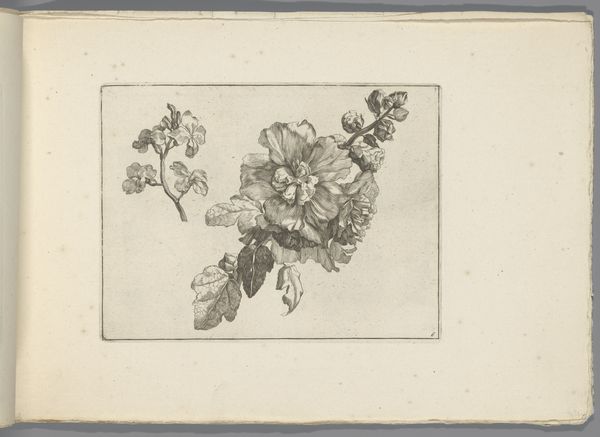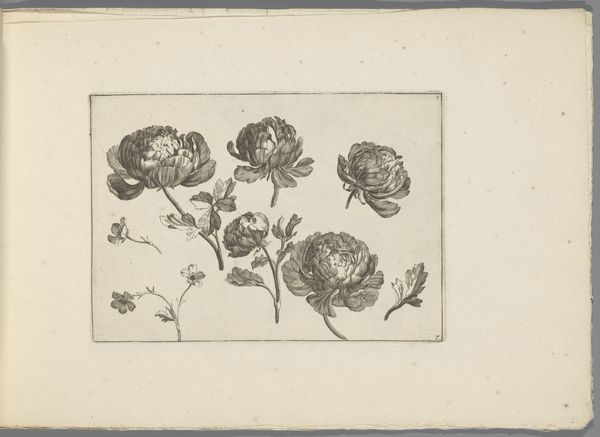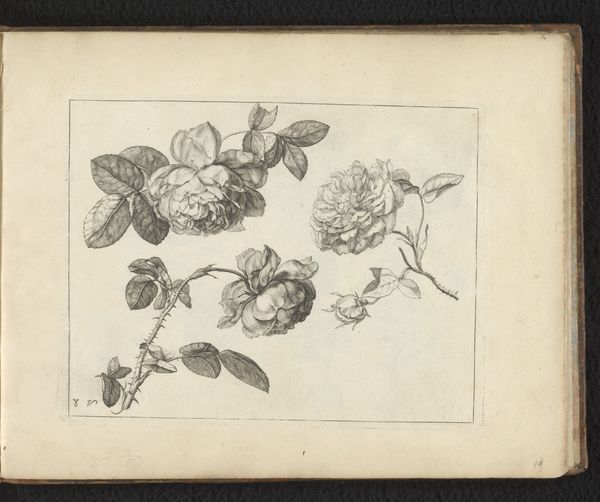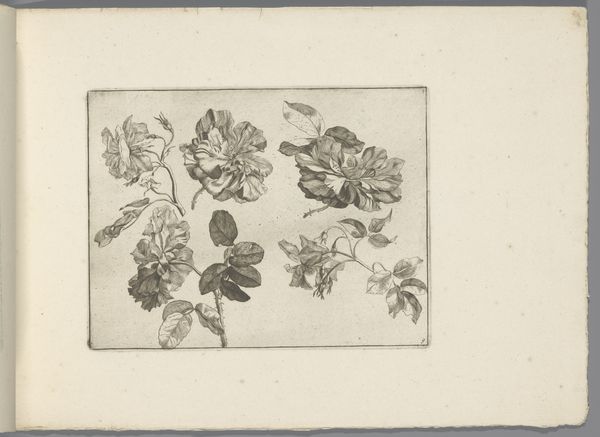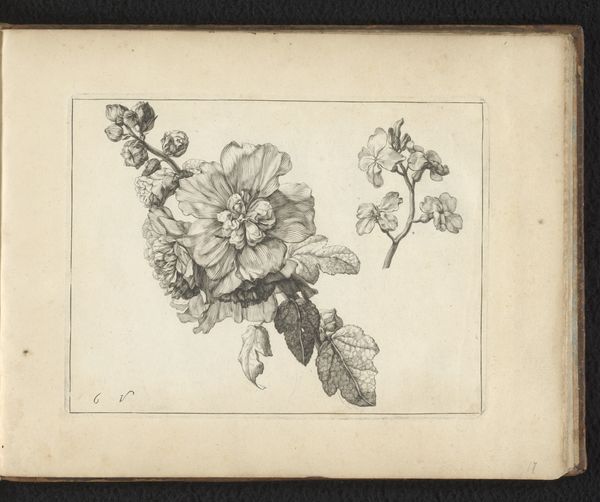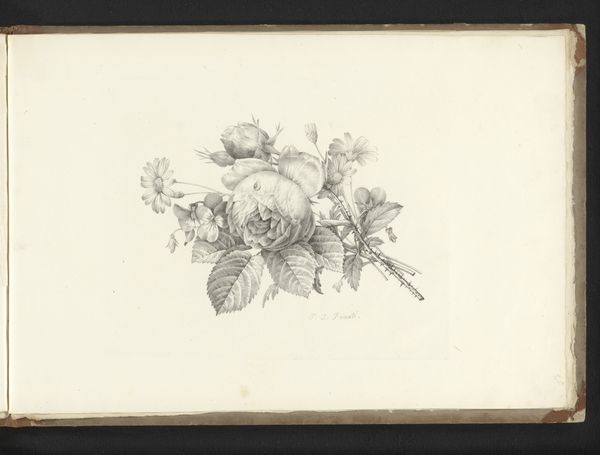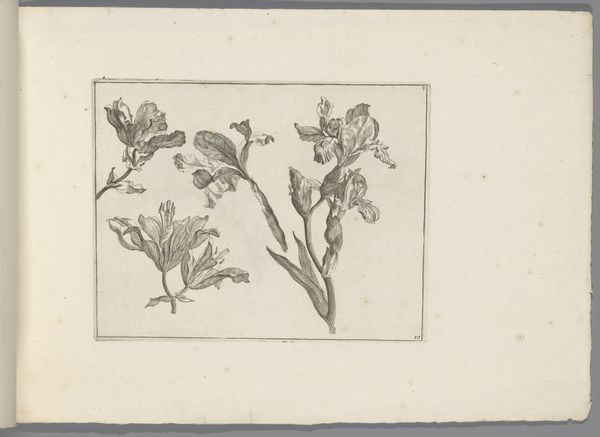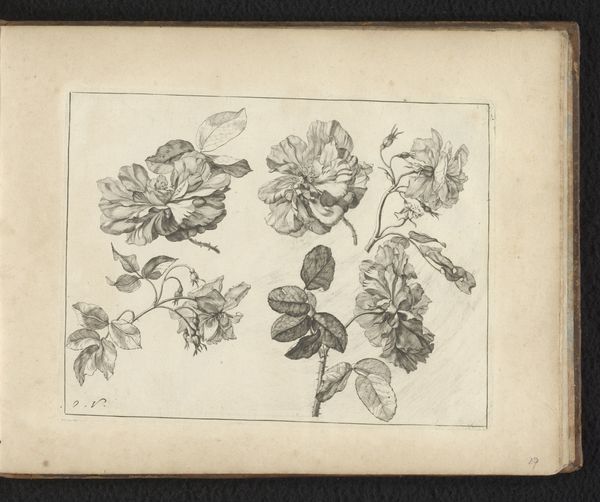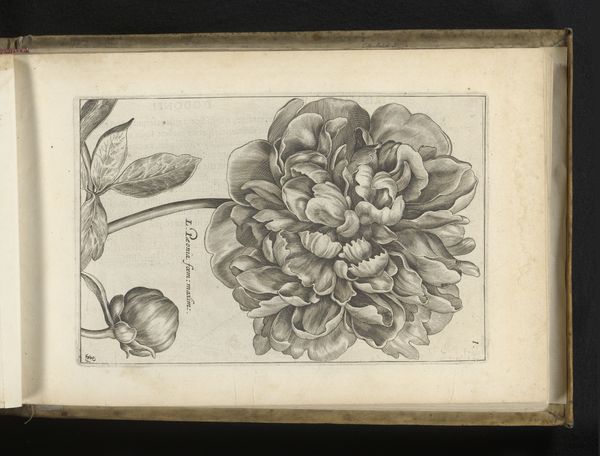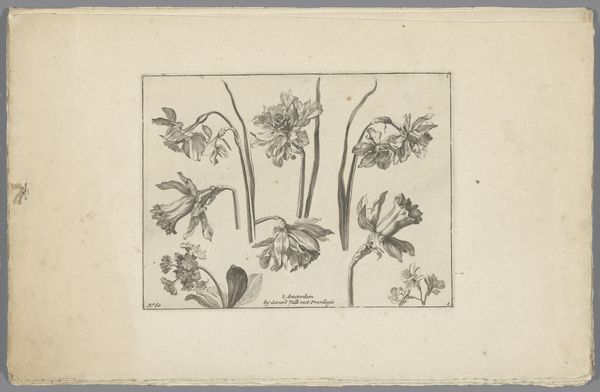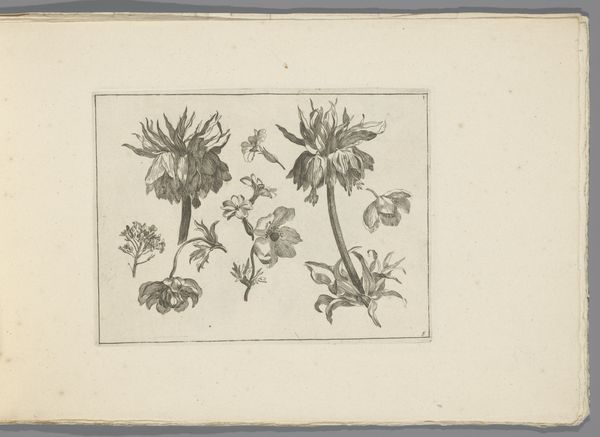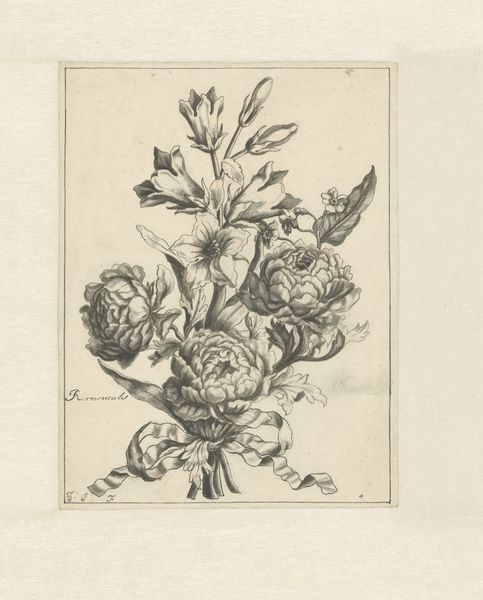
print, engraving
#
baroque
#
ink paper printed
# print
#
figuration
#
line
#
engraving
#
realism
Dimensions: height 134 mm, width 174 mm
Copyright: Rijks Museum: Open Domain
Editor: This is "Rozen" by Gerard Valck, made sometime between 1670 and 1726. It's an engraving, printed in ink on paper. I find the image delicate, like pressed flowers in an old book. What story can you tell me about it? Curator: It's interesting you use the term 'delicate.' While seemingly straightforward, consider how prints like this circulated in the 17th and 18th centuries. These botanical studies, meticulously rendered through engraving, played a role in the burgeoning scientific culture. Editor: Scientific? So it's less about the beauty of roses, and more about... classifying them? Curator: Not entirely! But consider the socio-political context. Exploration and colonialism were driving intense interest in the natural world. Gardens were status symbols and sites for scientific inquiry. These prints, often collected in albums, functioned both as aesthetic objects and tools for knowledge. They speak to the power structures of the time. Who had access to this knowledge, and what did they do with it? Editor: So the image becomes part of a system... I hadn’t thought of it that way. It changes how I see the artistry too, it's about communicating information efficiently and accurately. Curator: Precisely! Even something as seemingly innocuous as a rose becomes entangled with history when we consider its context. Does this give you a different appreciation for its creation? Editor: Definitely. It makes me wonder how scientific illustration is seen today, and who controls that knowledge now. It's given me a lot to think about!
Comments
No comments
Be the first to comment and join the conversation on the ultimate creative platform.
